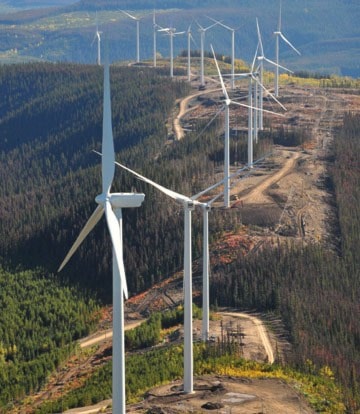VICTORIA – With BC Hydro struggling to control electricity rate increases and cutting back on private power acquisition, a company known mostly for wind projects is reviving a proposal to connect the Vancouver Island and Washington electricity grids.
Sea Breeze Power Corp. wants to build a 50 km transmission cable under the Strait of Juan de Fuca to connect substations near Port Angeles and Victoria. To finance the project, it's looking for a 10-year deal to assemble surplus U.S. power and sell it to BC Hydro at a flat rate of $69 per megawatt hour.
Sea Breeze CEO Paul Manson said the power purchase would finance the construction of the cable and deliver a steady source of electricity to B.C. at lower cost than new sources built in the province. It would also improve power quality and reliability for Vancouver Island residents, he said.
First proposed in 2006, the project has received environmental permits from both sides of the border. It was rejected by the B.C. Utilities Commission, which approved upgrading the existing power line from the B.C. mainland to Vancouver Island instead.
Sea Breeze developed a wind project at Cape Scott on northern Vancouver Island, and has plans and permits for other wind sites on the B.C. coast and the Peace River region. Manson said the Juan de Fuca cable would stabilize wind power supply on the B.C. coast, where wind speeds peak in winter, with inland Washington sites where it's windiest in summer.
Manson said U.S. policy led to major wind development that leaves the the Pacific Northwest with an excess of power in spring, meaning the Washington power utility has paid BC Hydro to take its excess when hydro dams are full.
The cable would also give B.C. more capacity to buy cheap overnight coal and nuclear power from the U.S., which BC Hydro already does with its main connecting line along Interstate 5, he said.
Energy Minister Bill Bennett said the Juan de Fuca cable is one of many proposals that came forward as BC Hydro developed its integrated resource plan. That plan estimates that with conservation and efficiency improvements in B.C., the province will need more electricity supplies within eight years.
The company has not yet demonstrated that it can assemble the firm electricity it proposes to sell, and the project has "a pretty steep slope to climb," Bennett said.
